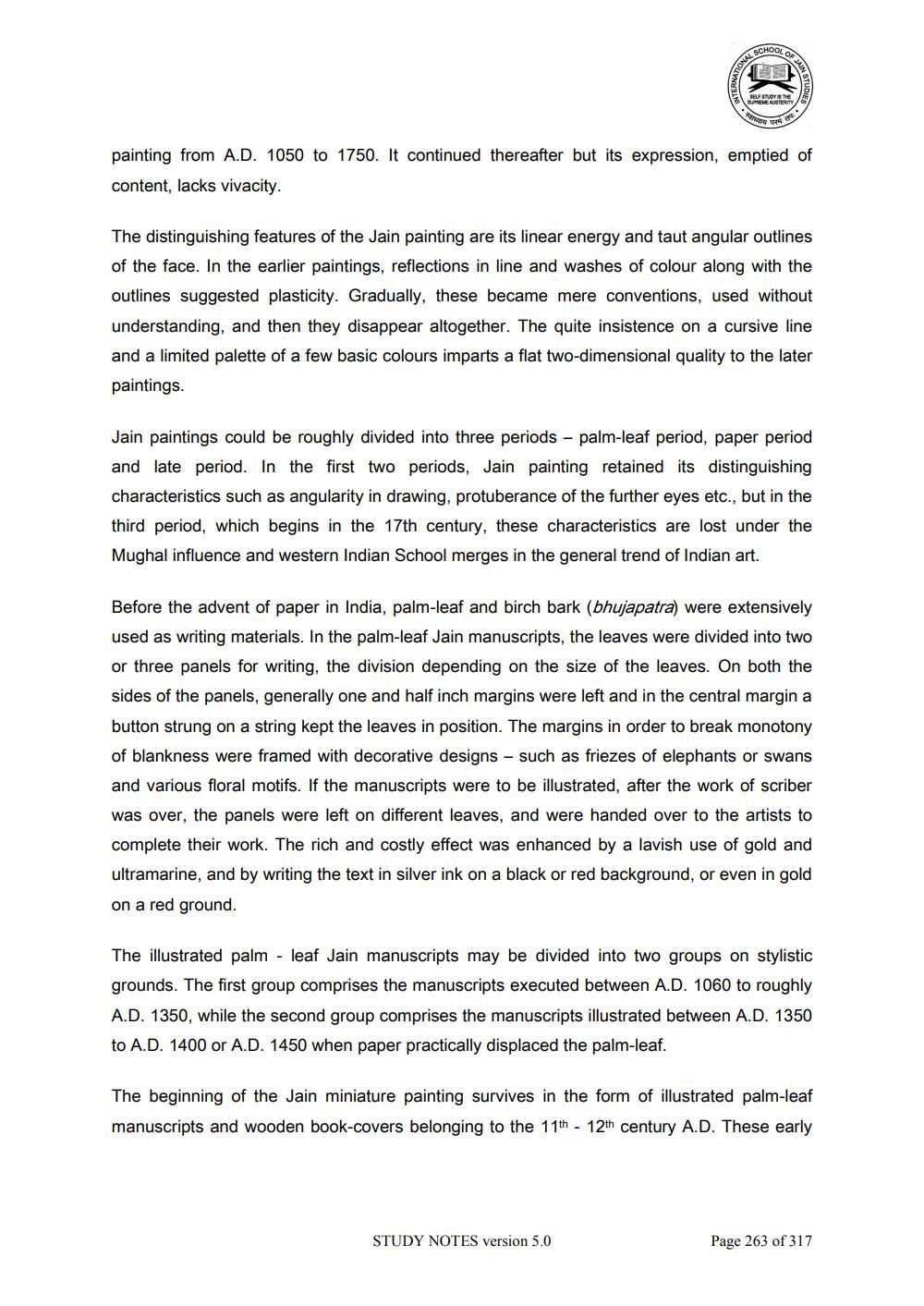________________
SCHOOL
OF
SELF STUDY IS THE
SUPREME AUSTERITY
स्वाध्याय
परमे
-
राप
NN STUDIES
painting from A.D. 1050 to 1750. It continued thereafter but its expression, emptied of content, lacks vivacity.
STUDY NOTES version 5.0
ES
The distinguishing features of the Jain painting are its linear energy and taut angular outlines of the face. In the earlier paintings, reflections in line and washes of colour along with the outlines suggested plasticity. Gradually, these became mere conventions, used without understanding, and then they disappear altogether. The quite insistence on a cursive line and a limited palette of a few basic colours imparts a flat two-dimensional quality to the later paintings.
Jain paintings could be roughly divided into three periods - palm-leaf period, paper period. and late period. In the first two periods, Jain painting retained its distinguishing characteristics such as angularity in drawing, protuberance of the further eyes etc., but in the third period, which begins in the 17th century, these characteristics are lost under the Mughal influence and western Indian School merges in the general trend of Indian art.
Before the advent of paper in India, palm-leaf and birch bark (bhujapatra) were extensively used as writing materials. In the palm-leaf Jain manuscripts, the leaves were divided into two or three panels for writing, the division depending on the size of the leaves. On both the sides of the panels, generally one and half inch margins were left and in the central margin a button strung on a string kept the leaves in position. The margins in order to break monotony of blankness were framed with decorative designs - such as friezes of elephants or swans and various floral motifs. If the manuscripts were to be illustrated, after the work of scriber was over, the panels were left on different leaves, and were handed over to the artists to complete their work. The rich and costly effect was enhanced by a lavish use of gold and ultramarine, and by writing the text in silver ink on a black or red background, or even in gold on a red ground.
The illustrated palm leaf Jain manuscripts may be divided into two groups on stylistic grounds. The first group comprises the manuscripts executed between A.D. 1060 to roughly A.D. 1350, while the second group comprises the manuscripts illustrated between A.D. 1350 to A.D. 1400 or A.D. 1450 when paper practically displaced the palm-leaf.
The beginning of the Jain miniature painting survives in the form of illustrated palm-leaf manuscripts and wooden book-covers belonging to the 11th - 12th century A.D. These early
Page 263 of 317




